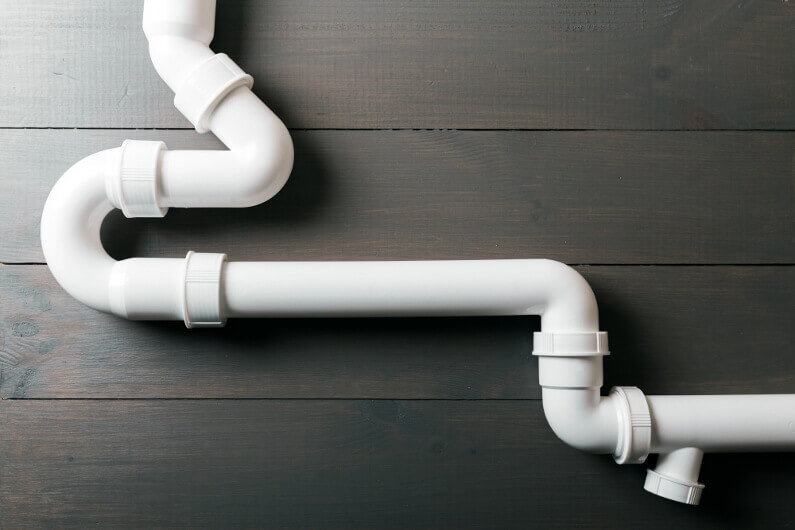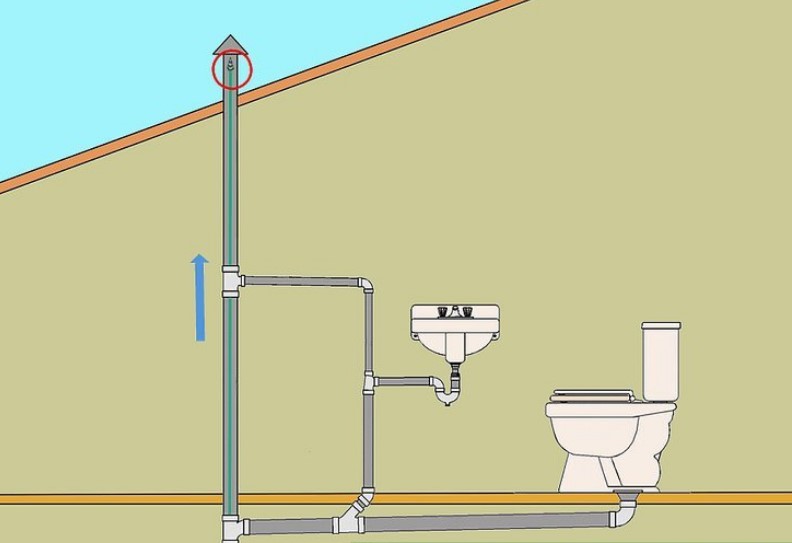On this page underneath you can discover lots of incredibly good guidance relating to What Are Plumbing Vents and Why Are They Important?.

Correct air flow in plumbing systems is commonly ignored, yet it is critical for maintaining the capability and safety and security of your home's pipes. Ventilation assists regulate air pressure, stop the accumulation of harmful gases, and make sure the effective elimination of waste. In this overview, we will certainly explore the value of appropriate pipes ventilation, just how it functions, and the benefits it brings to your pipes system.
How Air Flow Functions in Pipes Systems
Air Pressure Law
Correct air flow preserves balanced atmospheric pressure within the pipes system. When water moves with pipes, it displaces air. Without sufficient air flow, this variation can create unfavorable stress, resulting in slow down drains pipes or siphoning of water from catches, which can trigger unpleasant smells to seep into the home.
Preventing Drain Gas Accumulation
One of one of the most essential features of pipes vents is to avoid drain gases, such as methane and hydrogen sulfide, from accumulating within the home. These gases can position major health and wellness threats and are extremely combustible. Vent pipes enable these gases to run away safely outdoors.
Helping in Waste Removal
Ventilation aids in the effective elimination of wastewater by avoiding airlocks in the water drainage system. When air can stream freely via the vents, it permits water and waste to stream efficiently through the pipelines, lowering the threat of clogs and backups.
Benefits of Correct Ventilation
Boosted System Efficiency
Appropriately ventilated pipes systems operate extra efficiently, with less obstructions, faster draining, and much less pressure on the pipelines. This effectiveness extends the lifespan of the plumbing system.
Improved Air High Quality
By stopping sewer gases from entering your home, proper air flow contributes to better interior air top quality, making your living environment healthier and extra comfortable.
Protecting Against Water Damage
Adequate ventilation helps avoid water from being siphoned out of catches, which can cause drain gases entering the home and creating water damage with time.
Actions to Guarantee Proper Air Flow
Consulting Pipes Codes
Constantly get in touch with local pipes codes when creating or customizing your plumbing system. These codes offer the necessary guidelines for correct venting and guarantee your system meets security criteria.
Regular Evaluation and Upkeep
Routine inspections can help identify prospective ventilation problems before they come to be significant issues. Maintenance tasks, such as cleansing air vent pipelines and checking for clogs, are important for keeping the system in good working order.
Specialist Installation
For new installments or significant alterations, it's smart to hire an expert plumber. They have the experience to make sure the ventilation system is properly designed and mounted according to code.
Recognizing Air Flow in Plumbing
Air flow in pipes refers to the network of pipes that allow air to flow through the drainage system. These vents serve several functions, consisting of managing atmospheric pressure within the pipelines, stopping sewage system gases from getting in the home, and aiding in the smooth circulation of wastewater.
Kinds Of Pipes Vents
Key Stack Vent
The major stack vent, likewise known as the air vent stack, is the primary vent in a plumbing system. It prolongs from the primary drainpipe line up with the roof, enabling gases to escape and fresh air to enter the system.
Branch Vent
Branch vents link to the primary stack air vent and serve private components, such as sinks, toilets, and showers. These vents ensure that each fixture has appropriate air flow to work effectively.
Air Admission Valve (AAV).
An Air Admission Shutoff (AAV) is a one-way valve that permits air to go into the pipes system without the demand for a typical vent pipe extending via the roof covering. AAVs are generally used in restorations or areas where setting up a common vent is not practical.
Signs of Poor Ventilation in Pipes.
Slow Draining Fixtures.
If your sinks, bathtubs, or toilets are draining slowly, it could be an indication of inadequate air flow. Poor air flow can develop a vacuum effect, making it difficult for water to drain appropriately.
Gurgling Seems.
Gurgling noises originating from drains are typically a result of air being sucked through water catches as a result of unfavorable stress in the pipelines. This is a clear sign of not enough ventilation.
Unpleasant Odors.
Sewage system odors inside your home are a warning that your pipes system is not correctly ventilated. This might indicate that drain gases are not being sufficiently vented outside, resulting in possibly harmful conditions.
Typical Ventilation Mistakes.
Inadequate Vent Sizing.
Utilizing small air vent pipes can cause poor air flow and stress inequalities in the system. It's essential to use vents that meet the certain needs of your plumbing system.
Improper Vent Positioning.
Placing vents too much from the components they offer can minimize their performance. Proper positioning makes certain that air can move freely and efficiently via the system.
Disregarding Code Needs.
Building codes provide specific guidelines for pipes air flow. Disregarding these codes can result in a system that falls short to function appropriately and might cause pricey fixings or carcinogen.
Verdict.
Correct ventilation is an important part of any pipes system, guaranteeing that it operates efficiently and safely. By comprehending the importance of air flow, acknowledging the indicators of bad ventilation, and taking actions to keep your system, you can prevent costly concerns and safeguard your home's air top quality.
4 Things You Should Know About Your Plumbing Vents
What Plumbing Vents Are
Also called a vent stack, a plumbing vent is a vertical pipe attached to your drain line that runs through your roof. The plumbing vent pipe, or plumbing air vent, removes gas and odors from your plumbing system and allows fresh air to enter the pipes, helping the water to flow out of the drain pipes.
What Plumbing Vents Do
Plumbing vents have two basic functions. One of which is to allow unpleasant smelling wastewater and sewer gasses to escape your plumbing system instead of entering your home. Plumbing vent pipes are typically located on roofs, away from windows, to ensure the fumes exit the home completely.
The other function of the plumbing vent is to move fresh air into your plumbing system. This helps move water through every plumbing fixture in your house, like toilets and sink drains. Think of the way in which you need to let a little air into the bottle as you pour soda in order to make the drink flow smoothly.
Different Types of Plumbing Vents
True vent: This is the most common vent option. In simplest terms, a true vent is a vertical pipe attached to your drain line that exits through the roof. They often function as the main vent that other fixtures can connect to. Re-vent pipe or auxiliary vent: Attached to the drain line near specific plumbing fixtures, re-vent pipes run up and over to connect to the main vent. Common vent: Two plumbing fixtures installed on opposite sides of a wall are typically tied into the vent stack using something known as a sanitary cross. Wet vent: This venting option operates as a drain pipe and a vent at the same time. Wet vent drainage systems drain water from one fixture while venting the air from another. Although they’ve been used for over 100 years, wet vent systems have only recently been added to the plumbing code in many areas. If you’re planning on installing one in a bathroom remodel, make sure you check your local code prior to construction. Loop vent: For free-standing fixtures like kitchen island sinks, loop vents are ideal. These vent pipes run under the floor, rise from the P-trap, and create a loop inside the cabinet sink. Air admittance valve: An AAV is a one-way mechanical valve typically installed at the site of the plumbing fixture. AAVs allow venting to occur without having to tie into a larger venting system. They’re ideal for venting fixtures where you aren’t able to easily connect to an existing vent system. Common Plumbing Vent Issues
Although vent pipes typically don’t have water flowing through them, they’re still subject to many typical plumbing issues. For example, clogs are one of the most common problems associated with sewer vent pipes. If your vent pipe gets clogged, all of your plumbing fixtures tied into the vent stack will be affected.
A sink with a slow drain that bubbles and gurgles or a strong sewage smell around your toilet are both indicators that your toilet vent pipe is clogged. Because most vent pipes exit through the roof, old leaves, twigs or even a bird’s nest could be clogging the pipe.
Clogs in your vent pipe system cause a buildup of negative pressure, meaning that water won’t be able to flow out of your home very well. It’s similar to putting your finger over the opening of a straw to trap water inside. When you remove your finger, the water is able to flow out of the straw.
If you suspect you have any blockage in your vent, make sure you have a professional come examine the situation. Left unchecked, a blocked air vent can lead to other costly repairs, like leaks and sediment buildup.
Under Pressure
Pipe vents are essential aspects of a home’s plumbing system. Owning a home means learning about all sorts of things you never put much thought into before. But by understanding as much as you can about the important systems of your home, you can keep those budgets intact and those anxiety levels low.
https://www.homeserve.com/en-us/blog/home-improvement/plumbing-vents/

We are very excited about What Is A Plumbing Vent & How Do They Work? and I am praying you enjoyed reading our page. Sharing is nice. Helping others is fun. Thanks a bunch for being here. Return soon.
Book Inspection